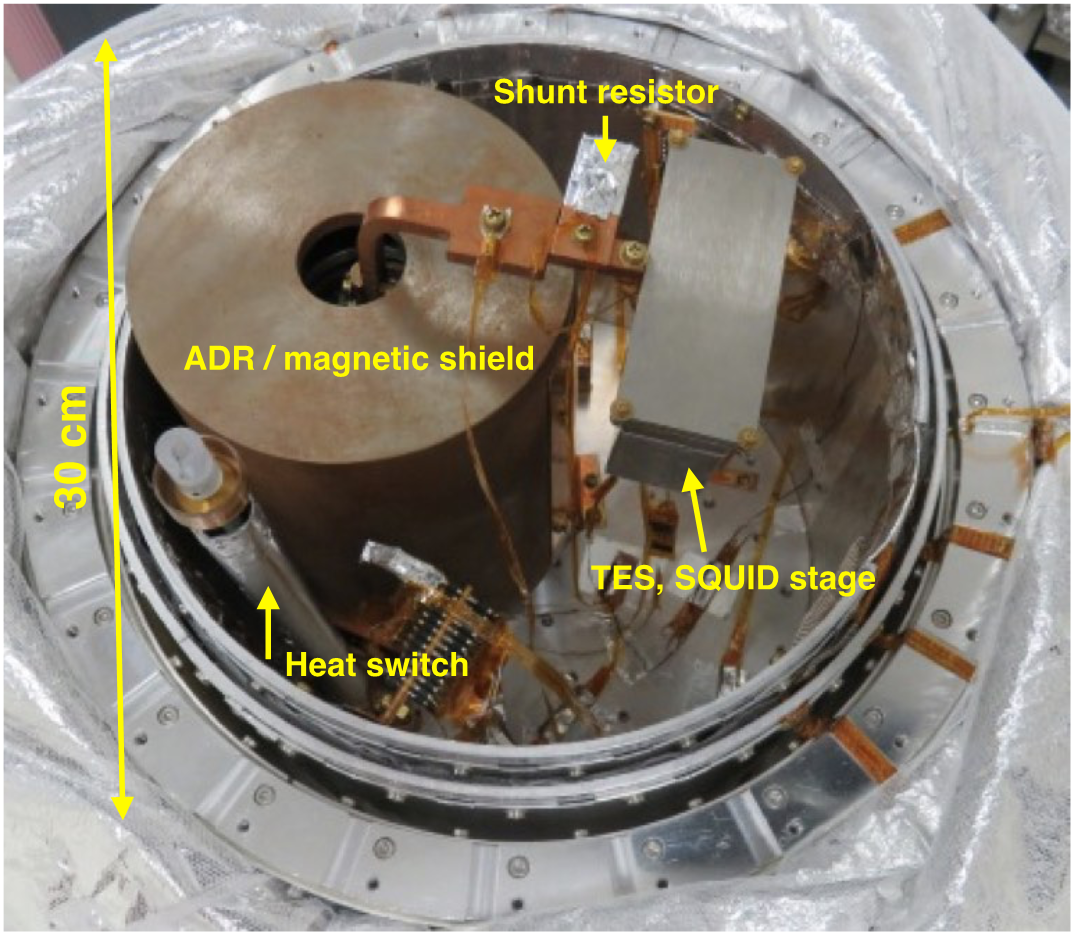| Program A01-2 | Research on stable operation of superconducting transition-edge sensors in neutral particle measurement |
|---|---|
| Principal Investigator | FUJIMOTO, Ryuichi (Kanazawa University) |
Transition-Edge Sensor (TES) microcalorimeters are non-dispersive
X-ray detectors that achieve high energy-resolution comparable to
grating spectrometers. If they can be stably operated with an open
hole in a radiation-blocking window, their application range would be
significantly extended, including neutral particle measurement. In
this research, we aim to design an optimal magnetic and thermal
shield, making full use of 3D electromagnetic and thermal
calculations, and to establish a technique of stable operation of TES
microcalorimeters without a radiation-blocking window. This will help
applications of TES microcalorimeters in various fields of advanced
measurement. It will also lead to a breakthrough in astronomical
observations.
In 2019, we will establish a method of 3D electromagnetic and thermal
calculations, in realistic configurations including a radiation
blocking window. In 2020, we carry out electromagnetic and thermal
calculations for complex cooling systems at Kanazawa University,
J-PARC, RIKEN, AIST, based on the method established. We also try to
improve calculation accuracy.
The principal researcher, Dr. Fujimoto, has been leading development
of X-ray microcalorimeter instruments installed on X-ray astronomy
satellites, has been doing research and development of TES
microcalorimeters in a laboratory, and achieved spectral resolution
of better than 3 eV FWHM at 5.9 keV on an adiabatic demagnetization
refrigerator (ADR) of his own making. Dr. Noda has various experience
in thermal calculations for satellite development and ground
experiments. Dr. Yamada is a member of the core research program, has
lots of experience in experiments for ground applications, and
supports smooth communication with the core research program team.
Members
- Principal Investigator
-
FUJIMOTO, Ryuichi
(Institute of Science and Engineering, Kanazawa University)
- Research Collaborators
-
NODA, Hirofumi (Osaka University)
YAMADA, Shinya (Tokyo Metropolitan University)
Reference Materials
- R. Fujimoto et al., “Performance of the helium dewar and the cryocoolers of the Hitomi soft x-ray spectrometer,” J. Astron. Telesc. Instrum. Syst. 4, id. 011208 (2018).
- Hitomi Collaboration, “Atmospheric gas dynamics in the Perseus cluster observed with Hitomi,” Publ. Astron. Soc. Jpn. 70, id.9 (2018).
- U. Hishi, R. Fujimoto, M. Kotake, H. Ito, K. Tanaka, Y. Kai, Y. Kinoshita, “X-ray study of extended emission around M 86 observed with Suzaku,” Publ. Astron. Soc. Jpn. 69, id.42 (2017).
- U. Hishi, R. Fujimoto, M. Kamiya, M. Kotake, H. Ito, T. Kaido, K. Tanaka, K. Hattori, “Temperature control and noise reduction in our compact ADR system for TES microcalorimeter operation,” J. Low Temp. Phys. 184, 583 (2016).
- U. Hishi, R. Fujimoto, T. Kinoshita, S. Takakura, T. Mitsude, K. Kamiya, M. Kotake, A. Hoshino, K. Shinozaki, “Magnetic shielding of an adiabatic demagnetization refrigerator for TES microcalorimeter operation,“ J. Low Temp. Phys. 176, 1075 (2014).


